- Home
- Kurt Vonnegut
Deadeye Dick
Deadeye Dick Read online
AMERICA'S GREATEST SATIRIST
KURT VONNEGUT IS...
"UNIQUE ... one of the writers who map our landscapes for us, who give names to the places we know best."
--DORIS LESSING,
The New York Times Book Review
"OUR FINEST BLACK-HUMORIST.... We laugh in self-defense."
--The Atlantic Monthly
"AN UNIMITATIVE AND INIMITABLE SOCIAL SATIRIST."
--Harper's Magazine
"A CAUSE FOR CELEBRATION."
--Chicago Sun-Times
"A LAUGHING PROPHET OF DOOM."
--The New York Times
DEADEYE DICK
"A brilliantly unconventional novel ... a must for all Vonnegut fans."
--Worcester Sunday Telegram
"Hits the bull's-eye ... dolefully celebrates the randomness of life, treating private and public disasters with a kind of reckless whimsy.... You don't read Kurt Vonnegut for meaning exactly. You read him for the sad-funny attitude of mind, the kind of weirdness that can interpret the world's weirdness."
--USA Today
"Vonnegut is as beguiling as ever ... Incredible plot constructions and inventive language continue to leap from his typewriter ... the humor is natural and inborn; the insight usually purchased by his characters at painfully high cost. Funny how life turns out. Even funnier how Mr. Vonnegut turns life's insanities into funny, profound sense. That takes a master's touch. Mr. Vonnegut still has it."
--Kansas City Star
"Good news for an American public which can pretty obviously use much of Vonnegut's honesty, moral vision, and revulsion for mankind's stupidities as it can get.... Vonnegut's bittersweet sensibility ... somehow manages to hold horror and humor, disgust and whimsical acceptance, in almost perfect equilibrium.... In Deadeye Dick, the Vonnegut trademark with language--the simple, childlike rhetoric which has the effect of unmasking the absurdity of so much that we take for granted--remains in fine working order.... In [Dark Ages] such as these, it remains a pleasure to have Kurt Vonnegut around to shed light on our circumstances."
--San Diego Union
"Playful and imaginative ... Deadeye Dick is so lambently lighthearted that when it's over, you barely remember that it contains a death by radioactivity, a double murder--a decapitation, a blizzard that kills hundreds, and ... the annihilation of an entire city by a neutron bomb.... On finishing the novel, the kitchen of your mind is a cleaner and more well-lighted place than it was before."
--Houston Chronicle
"Wonderfully inventive, full of anecdote and wit and comedic insouciance."
--South Bend Tribune
"Kurt Vonnegut is a humorist of the first rank; in breadth and quality his corpus approaches even Twain's."
--Bestsellers
"A kind of celebration of the way we weather disaster ... endearing and enchanting ... a wise and charming book ... very full of life."
--Glamour
"Vonnegut gives pity 'a cutting edge.' "
--The Washington Times
"Winsomely ambiguous in its simplicity, funny/sad with human reality. [Deadeye Dick shows Vonnegut] in mellow, splendid form."
--Library Journal
"Vonnegut novels range from very good to great. Count Deadeye Dick among the great.... His unique, colorful, powerful style ... continues to touch both readers and truth."
--Nashville Banner
BOOKS BY KURT VONNEGUT
Bluebeard
Breakfast of Champions
Cat's Cradle
Deadeye Dick
Galapagos
God Bless You, Mr. Rosewater
Jailbird
Mother Night
Palm Sunday
Player Piano
The Sirens of Titan
Slapstick
Slaughterhouse-Five
Wampeters, Foma & Granfalloons
Welcome to the Monkey House
For Jill
PREFACE
"DEADEYE DICK," like "Barnacle Bill," is a nickname for a sailor. A deadeye is a rounded wooden block, usually bound with rope or iron, and pierced with holes. The holes receive a multiplicity of lines, usually shrouds or stays, on an old-fashioned sailing ship. But in the American Middle West of my youth, "Deadeye Dick" was an honorific often accorded to a person who was a virtuoso with firearms.
So it is a sort of lungfish of a nickname. It was born in the ocean, but it adapted to life ashore.
*
There are several recipes in this book, which are intended as musical interludes for the salivary glands. They have been inspired by James Beard's American Cookery, Marcella Hazan's The Classic Italian Cook Book, and Bea Sandler's The African Cookbook. I have tinkered with the originals, however--so no one should use this novel for a cookbook.
Any serious cook should have the reliable originals in his or her library anyway.
*
There is a real hotel in this book, the Grand Hotel Oloffson in Port au Prince, Haiti. I love it, and so would almost anybody else. My dear wife Jill Krementz and I have stayed there in the so-called "James Jones Cottage," which was built as an operating room when the hotel was headquarters for a brigade of United States Marines, who occupied Haiti, in order to protect American financial interests there, from 1915 until 1934.
The exterior of that austere wooden box has subsequently been decorated with fanciful, jigsaw gingerbread, like the rest of the hotel.
The currency of Haiti, by the way, is based on the American dollar. Whatever an American dollar is worth, that is what a Haitian dollar is worth, and actual American dollars are in general circulation. There seems to be no scheme in Haiti, however, for retiring worn-out dollar bills, and replacing them with new ones. So it is ordinary there to treat with utmost seriousness a dollar which is as insubstantial as a cigarette paper, and which has shrunk to the size of an airmail stamp.
I found one such bill in my wallet when I got home from Haiti a couple of years ago, and I mailed it back to Al and Sue Seitz, the owners and host and hostess of the Oloffson, asking them to release it into its natural environment. It could never have survived a day in New York City.
*
James Jones (1921-1977), the American novelist, was actually married to his wife Gloria in the James Jones Cottage, before it was called that. So it is a literary honor to stay there.
There is supposedly a ghost--not of James Jones, but of somebody else. We never saw it. Those who have seen it describe a young white man in a white jacket, possibly a medical orderly of some kind. There are only two doors, a back door opening into the main hotel, and the front door opening onto a porch. This ghost is said to follow the same route every time it appears. It comes in through the back door, searches for something in a piece of furniture which isn't there anymore, and then goes out the front door. It vanishes when it passes through the front door. It has never been seen in the main hotel or on the porch.
It may have an uneasy conscience about something it did or saw done when the cottage was an operating room.
*
There are four real painters in this book, one living and three dead. The living one is my friend in Athens, Ohio, Cliff McCarthy. The dead ones are John Rettig, Frank Duveneck, and Adolf Hitler.
Cliff McCarthy is about my age and from my part of America, more or less. When he went to art school, it was drummed into him that the worst sort of painter was eclectic, borrowing from here and there. But now he has had a show of thirty years of his work, at Ohio University, and he says, "I notice that I have been eclectic." It's strong and lovely stuff he does. My own favorite is "The Artist's Mother as a Bride in 1917." His mother is all dressed up, and it's a warm time of year, and somebody has persuaded her to pose in the bow of a rowboat. The rowboat is in a perfectly still
, narrow patch of water, a little river, probably, with the opposite bank, all leafy, only fifty yards away. She is laughing.
There really was a John Rettig, and his painting in the Cincinnati Art Museum, "Crucifixion in Rome," is as I have described it.
There really was a Frank Duveneck, and I in fact own a painting by him, "Head of a Young Boy." It is a treasure left to me by my father. I used to think it was a portrait of my brother Bernard, it looks so much like him.
And there really was an Adolf Hitler, who studied art in Vienna before the First World War, and whose finest picture may in fact have been "The Minorite Church of Vienna."
*
I will explain the main symbols in this book.
There is an unappreciated, empty arts center in the shape of a sphere. This is my head as my sixtieth birthday beckons to me.
There is a neutron bomb explosion in a populated area. This is the disappearance of so many people I cared about in Indianapolis when I was starting out to be a writer. Indianapolis is there, but the people are gone.
Haiti is New York City, where I live now.
The neutered pharmacist who tells the tale is my declining sexuality. The crime he committed in childhood is all the bad things I have done.
*
This is fiction, not history, so it should not be used as a reference book. I say, for example, that the United States Ambassador to Austria-Hungary at the outbreak of the First World War was Henry Clowes, of Ohio. The actual ambassador at that time was Frederic Courtland Penfield of Connecticut.
I also say that a neutron bomb is a sort of magic wand, which kills people instantly, but which leaves their property unharmed. This is a fantasy borrowed from enthusiasts for a Third World War. A real neutrom bomb, detonated in a populated area, would cause a lot more suffering and destruction than I have described.
I have also misrepresented Creole, just as the viewpoint character, Rudy Waltz, learning that French dialect, might do. I say that it has only one tense--the present. Creole only seems to have that one tense to a beginner, especially if those speaking it to him know that the present tense is the easiest tense for him.
Peace.
--K.V.
Who is Celia? What is she?
That all her swains commend her?
--OTTO WALTZ
(1892-1960)
1
TO THE AS-YET-UNBORN, to all innocent wisps of undifferentiated nothingness: Watch out for life.
I have caught life. I have come down with life. I was a wisp of undifferentiated nothingness, and then a little peephole opened quite suddenly. Light and sound poured in. Voices began to describe me and my surroundings. Nothing they said could be appealed. They said I was a boy named Rudolph Waltz, and that was that. They said the year was 1932, and that was that. They said I was in Midland City, Ohio, and that was that.
They never shut up. Year after year they piled detail upon detail. They do it still. You know what they say now? They say the year is 1982, and that I am fifty years old.
Blah blah blah.
*
My father was Otto Waltz, whose peephole opened in 1892, and he was told, among other things, that he was the heir to a fortune earned principally by a quack medicine known as "Saint Elmo's Remedy." It was grain alcohol dyed purple, flavored with cloves and sarsaparilla root, and laced with opium and cocaine. As the joke goes: It was absolutely harmless unless discontinued.
He, too, was a Midland City native. He was an only child, and his mother, on the basis of almost no evidence whatsoever, concluded that he could be another Leonardo da Vinci. She had a studio built for him on a loft of the carriage house behind the family mansion when he was only ten years old, and she hired a rapscallion German cabinetmaker, who had studied art in Berlin in his youth, to give Father drawing and painting lessons on weekends and after school.
It was a sweet racket for both teacher and pupil. The teacher's name was August Gunther, and his peephole must have opened in Germany around 1850. Teaching paid as well as cabinetmaking, and, unlike cabinetmaking, allowed him to be as drunk as he pleased.
After Father's voice changed, moreover, Gunther could take him on overnight visits by rail to Indianapolis and Cincinnati and Louisville and Cleveland and so on, ostensibly to visit galleries and painters' studios. The two of them also managed to get drunk, and to become darlings of the fanciest whorehouses in the Middle West.
Was either one of them about to acknowledge that Father couldn't paint or draw for spur apples?
*
Who else was there to detect the fraud? Nobody. There wasn't anybody else in Midland City who cared enough about art to notice if Father was gifted or not. He might as well have been a scholar of Sanskrit, as far as the rest of the town was concerned.
Midland City wasn't a Vienna or a Paris. It wasn't even a St. Louis or a Detroit. It was a Bucyrus. It was a Kokomo.
*
Gunther's treachery was discovered, but too late. He and Father were arrested in Chicago after doing considerable property damage in a whorehouse there, and Father was found to have gonorrhea, and so on. But Father was by then a fully committed, eighteen-year-old good-time Charley.
Gunther was denounced and fired and blacklisted. Grandfather and Grandmother Waltz were tremendously influential citizens, thanks to Saint Elmo's Remedy. They spread the word that nobody of quality in Midland City was ever to hire Gunther for cabinetwork or any other sort of work--ever again.
Father was sent to relatives in Vienna, to have his gonorrhea treated and to enroll in the world-famous Academy of Fine Arts. While he was on the high seas, in a first-class cabin aboard the Lusitania, his parents' mansion burned down. It was widely suspected that the showplace was torched by August Gunther, but no proof was found.
Father's parents, rather than rebuild, took up residence in their thousand-acre farm out near Shepherdstown--leaving behind the carriage house and a cellar hole. This was in 1910--four years before the outbreak of the First World War.
*
So Father presented himself at the Academy of Fine Arts with a portfolio of pictures he had created in Midland City. I myself have examined some of the artwork of his youth, which Mother used to moon over after he died. He was good at cross-hatching and shading a drapery, and August Gunther must have been capable in those areas, too. But with few exceptions, everything Father depicted wound up looking as though it were made of cement--a cement woman in a cement dress, walking a cement dog, a herd of cement cattle, a cement bowl of cement fruit, set before a window with cement curtains, and so on.
He was no good at catching likenesses, either. He showed the Academy several portraits of his mother, and I have no idea what she looked like. Her peephole closed long before mine opened. But I do know that no two of Father's portraits of her resemble each other in the least.
Father was told to come back to the Academy in two weeks, at which time they would tell him whether they would' take him in or not.
He was in rags at the time, with a piece of rope for a belt, and with patched trousers and so on--although he was receiving an enormous allowance from home. Vienna was then the capital of a great empire, and there were so many elaborate uniforms and exotic costumes, and so much wine and music that it seemed to Father to be a fancy dress ball. So he decided to come to the party as a starving artist. What fun!
And he must have been very good-looking then, for he was, in my opinion, the best-looking man in Midland City when I got to know him a quarter of a century later. He was slender and erect to the end. He was six feet tall. His eyes were blue. He had curly golden hair, and he had lost almost none of it when his peephole closed, when he was allowed to stop being Otto Waltz, when he became just another wisp of undifferentiated nothingness again.
*
So he came back in two weeks, and a professor handed him back his portfolio, saying that his work was ludicrous. And there was another young man in rags there, and he, too, had his portfolio returned with scorn.
His nam
e was Adolf Hitler. He was a native Austrian. He had come from Linz.
And Father was so mad at the professor that he got his revenge right then and there. He asked to see some of Hitler's work, with the professor looking on. He picked a picture at random, and he said it was a brilliant piece of work, and he bought it from Hitler for more cash on the spot than the professor, probably, could earn in a month or more.
Only an hour before, Hitler had sold his overcoat so that he could get a little something to eat, even though winter was coming on. So there is a chance that, if it weren't for my father, Hitler might have died of pneumonia or malnutrition in 1910.
Father and Hitler paired off for a while, as people will--comforting and amusing each other, jeering at the art establishment which had rejected them, and so on. I know they took several long walking trips, just the two of them. I learned of their good times together from Mother. When I was old enough to be curious about Father's past, World War Two was about to break out, and Father had developed lockjaw as far as his friendship with Hitler was concerned.
Think of that: My father could have strangled the worst monster of the century, or simply let him starve or freeze to death. But he became his bosom buddy instead.
That is my principal objection to life, I think: It is too easy, when alive, to make perfectly horrible mistakes.
*
The painting Father bought from Hitler was a water-color which is now generally acknowledged as having been the best thing the monster ever did as a painter, and it hung for many years over my parents' bed in Midland City, Ohio. Its title was: "The Minorite Church of Vienna."
2
FATHER WAS so well received in Vienna, known to one and all as an American millionaire disguised as a ragged genius, that he roistered there for nearly four years. When the First World War broke out in August of 1914, he imagined that the fancy dress ball was to become a fancy dress picnic, that the party was to be moved out into the countryside. He was so happy, so naive, so self-enchanted, that he asked influential friends if they couldn't get him a commission in the Hungarian Life Guard, whose officers' uniforms included a panther skin.

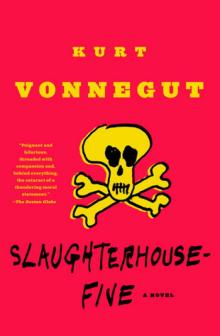 Slaughterhouse-Five
Slaughterhouse-Five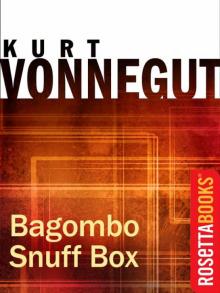 Bagombo Snuff Box: Uncollected Short Fiction
Bagombo Snuff Box: Uncollected Short Fiction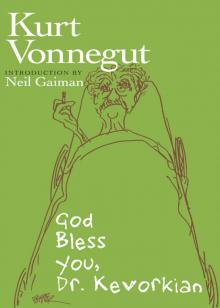 God Bless You, Dr. Kevorkian
God Bless You, Dr. Kevorkian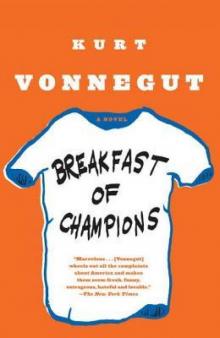 Breakfast of Champions
Breakfast of Champions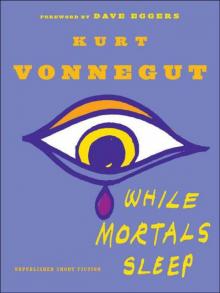 While Mortals Sleep: Unpublished Short Fiction
While Mortals Sleep: Unpublished Short Fiction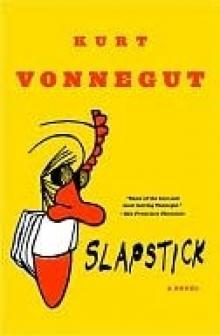 Slapstick or Lonesome No More!
Slapstick or Lonesome No More!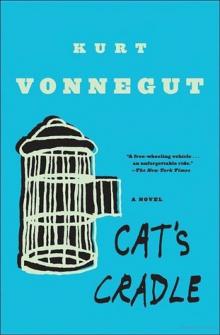 Cat's Cradle
Cat's Cradle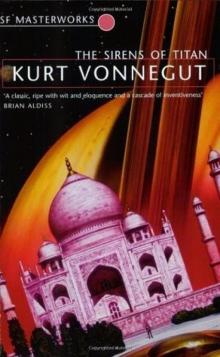 The Sirens of Titan
The Sirens of Titan A Man Without a Country
A Man Without a Country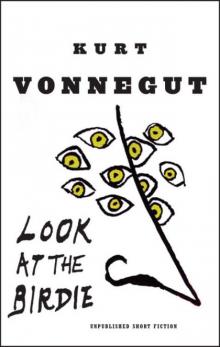 Look at the Birdie: Unpublished Short Fiction
Look at the Birdie: Unpublished Short Fiction Bluebeard
Bluebeard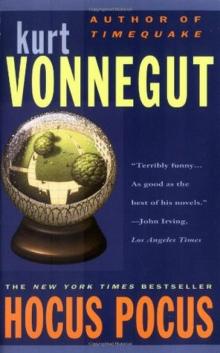 Hocus Pocus
Hocus Pocus The Big Trip Up Yonder
The Big Trip Up Yonder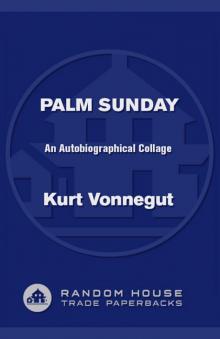 Palm Sunday: An Autobiographical Collage
Palm Sunday: An Autobiographical Collage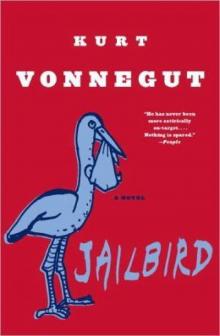 Jailbird
Jailbird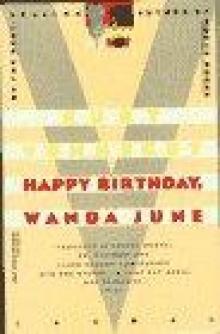 Happy Birthday, Wanda June
Happy Birthday, Wanda June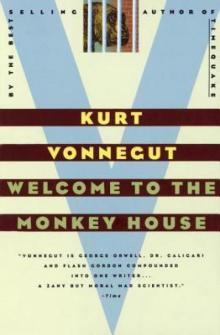 Welcome to the Monkey House
Welcome to the Monkey House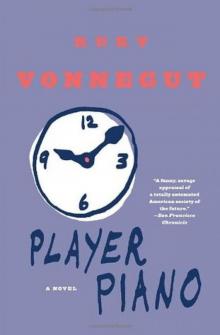 Player Piano
Player Piano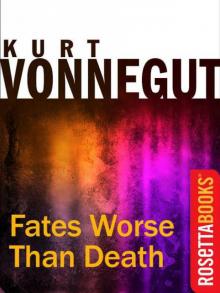 Fates Worse Than Death: An Autobiographical Collage
Fates Worse Than Death: An Autobiographical Collage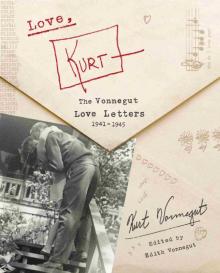 Love, Kurt
Love, Kurt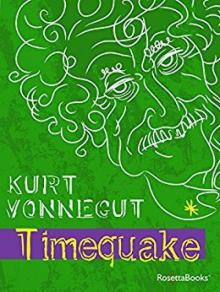 Timequake
Timequake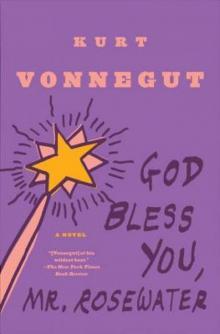 God Bless You, Mr. Rosewater
God Bless You, Mr. Rosewater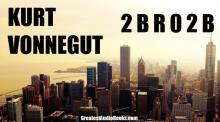 2 B R 0 2 B
2 B R 0 2 B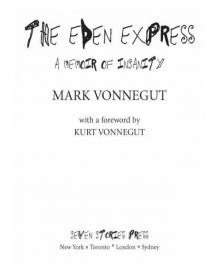 The Eden Express: A Memoir of Insanity
The Eden Express: A Memoir of Insanity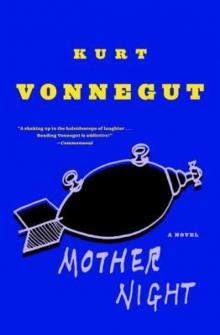 Mother Night
Mother Night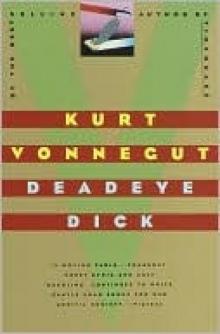 Deadeye Dick
Deadeye Dick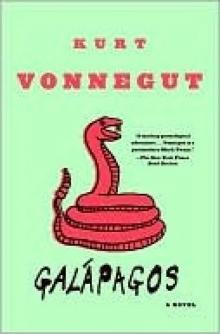 Galápagos
Galápagos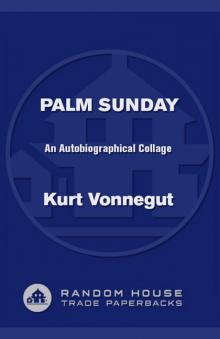 Palm Sunday
Palm Sunday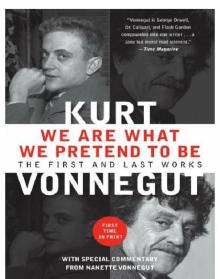 We Are What We Pretend to Be
We Are What We Pretend to Be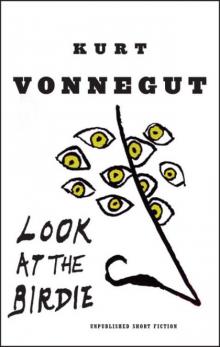 Look at the Birdie
Look at the Birdie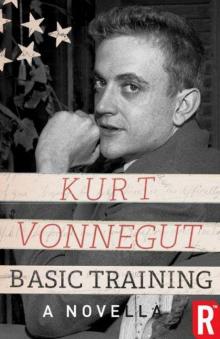 Basic Training
Basic Training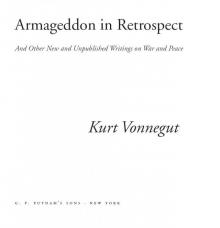 Armageddon in Retrospect
Armageddon in Retrospect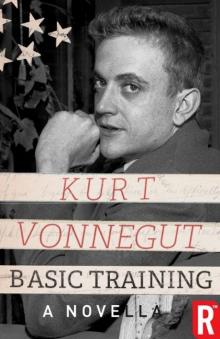 Basic Training (Kindle Single)
Basic Training (Kindle Single)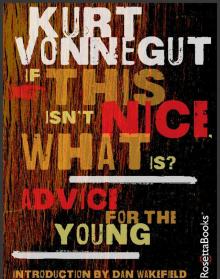 If This Isn't Nice, What Is?
If This Isn't Nice, What Is?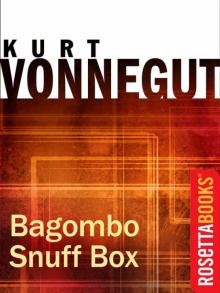 Bagombo Snuff Box
Bagombo Snuff Box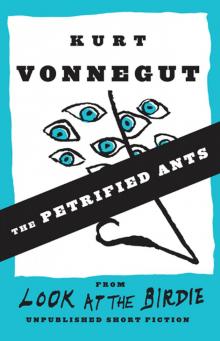 The Petrified Ants
The Petrified Ants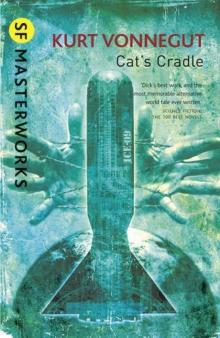 Cat's Cradle: A Novel
Cat's Cradle: A Novel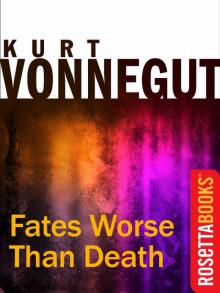 Fates Worse Than Death: An Autobiographical Collage (Kurt Vonnegut Series)
Fates Worse Than Death: An Autobiographical Collage (Kurt Vonnegut Series)